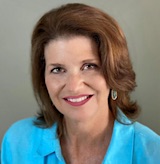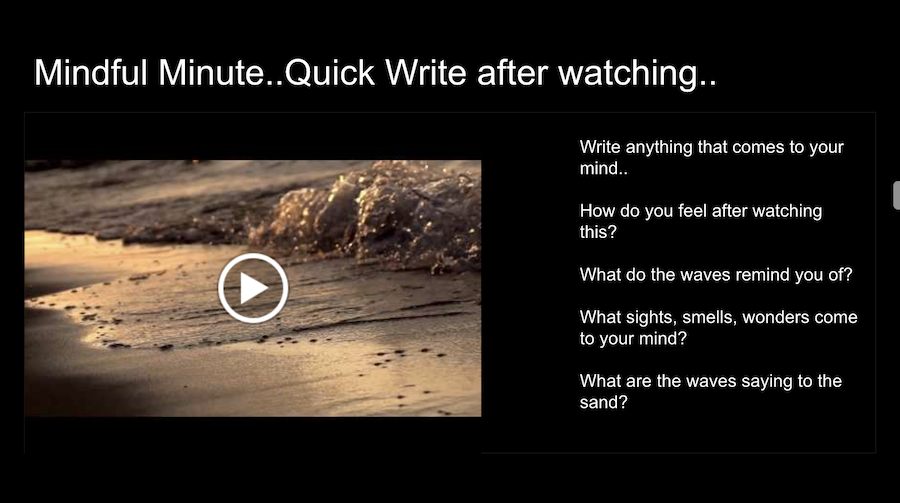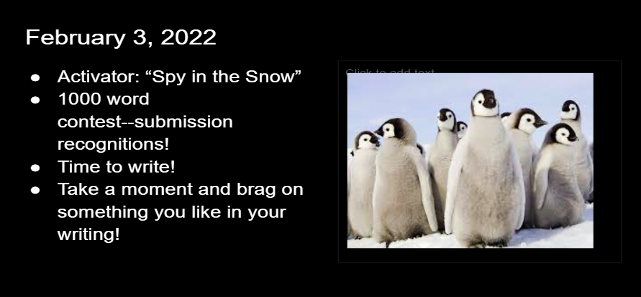Starting a Writing Club Outside the Classsroom
By Sharon D. Ratliff

A extracurricular writing club can be a safe space for students to escape the world, express true feelings, and embrace creative ideas.
So how do we as teachers facilitate a safe space? Although my curriculum allows students to write, I realized that students wanted an opportunity to write outside the walls of the classroom and connect with other friends beyond their designated English period.
So I decided to start a writing club in our middle school that would exist beyond curriculum boundaries and provide a comfortable, social experience for all writers.
Three years into the experiment, here are some tips and tricks I’ve learned along the way. I hope these suggestions will help you establish your own campus writing club.
Establish a time and common place to meet.
Meeting in a common area encourages multiple grade levels to participate and avoids the stigma that the writing club is for a certain type or age of student. Our club meets 3 times a month in the library from 8:00 till 8:45. Membership is flexible; any student may join the club at any time. Attendance varies from 30 students to 10 students.
Our most important ‘rule’
Using an open platform, students created the rules for writing clubs. Specifically, I wrote down what they thought a writing club should look like, and we discussed their suggestions. One of the first “rules” the students established in the writing club: there are no “rules” or limitations on what you write! In our club, writing is a haven from the constant barrage of what thumps us in the outside world.
Let the students name the writing club and establish a “purpose.”
While there are no “rules of writing club,” students came up with the following purpose: to freely express ourselves in any genre we select, use words to encourage others, receive feedback from peers on personal writing, and participate (if you want to) in various writing contests.
Writing club embraces both handwriting and using technology to write. Without a doubt, it is essential for students to name the club in order for them to establish ownership. To facilitate this process, at the beginning of each year students brainstorm one week and the following week vote on what the club will be called. For the past two years we have been “Ink and Fable.”
Build a community.
Using icebreakers, giving out free “journals” (colorful composition books) along with pens, providing publishing opportunities, and serving occasional celebration snacks all help build a community. To see some ways I use writing activators to build community click here. For example, students might watch this peaceful scene of waves washing up on shore and respond to a prompt:

Use your learning management system (LMS) and give students access.
I created a course on our district LMS-Canvas (you might choose another space). The course is used for students to post their writing and gather inspiration from the group. I also use the LMS to inform the members about upcoming opportunities to compete in writing contests. Numerous contests abound; here is a WE ARE TEACHERS resource by Sean Hogan that I use to find writing contests.
Establish a light agenda for meeting.
Students thrive on routine. If students know the basic format, their energy can be funneled into creation instead of guessing what we are going to do. The agenda consists of an activator which may include an attention-getting nature picture, a 3-2-1 exercise, a cartoon, a video, or an introduction to a contest.
After the warmup students springboard to work on any type of writing they choose. Sometimes, I encourage students to group themselves according to the genre they are working on.

All levels of writers welcome
Writing club is an eclectic group. Some students come to just write haikus or journal, some to write rap, and some come seeking specific feedback for a writing contest piece. We’ve also had some students come just to get feedback about their English essay!
Words of encouragement
Our writing club had some stationery donated. We have used this to write notes of encouragement to custodians, counselors, or other “unseen” yet important employees in the school. Since there are no rules of writing club, this is not a requirement. Yet students love to participate, and this is where they begin to learn how much their words matter.
Advice Column
One of our activators consisted of students responding to an old newspaper column from a teen seeking advice. We then compared the club members’ responses to the actual advice published. Some club members then asked if they could write an advice column for our school.
Yes! Club members then created a QR code from a Google Form for all students on our campus to anonymously submit problems to the writing club. A group of students from the writing club might then select a question/problem and draft an answer. I then proofread the answer for content, and the writing club students alternate on who will record the answer for playback during the school announcements.
Make this idea your own
I hope these tips and tricks help any ELA teacher interested in starting a writing club. Just remember – there are no rules; the writing police will not appear at your school door, just students who want to connect and create. While kids struggle with self-image, peer relationships, and communication, ink and paper have no judgment.
After all, their words matter!
Sharon Ratliff (@sharondratliff) recently shifted from 7th grade ELA teacher to middle school gifted and talented facilitator in Katy, Texas. Before stepping into the mysterious land of middle school, Sharon taught upper elementary in Texas, Florida, and with the Department of Defense.
Over the past 20 years, Sharon has mentored young teachers, hoping to pass along a love for educating young minds. She enjoys working with all students, developing curricula that emphasizes critical thinking and discovering reading and writing techniques that empower students in real-life applications. See Sharon’s other MiddleWeb articles here.































Sharon, this is wonderful. I wish I had had such a club as a middle schooler myself. Your tips are very helpful — the way that you create structures around what is a very open space. I think that balance is key for our age group (I teach 8th grade).
I’ve just written a book – Who Gets To Write Fiction: Opening Doors to Imaginative Writing for All Students — about creative writing and how it can and should be a central part of ELA and our study of literature. The book is more focused on integrating imaginative writing regularly into our regular class work. However, there are always a number of my 8th grade students who really take to fiction and/or poetry writing and want to continue.
My colleague in the HS has started a creative writing club and many of my now former students have joined. I will share your article with him. But I’ll also considering starting a MS club after school. A space for those who are called beyond the classroom and school day to write is important.
Ariel,
Thank you for the positive feedback. I’m excited about your book and will check it out! If you start a writing club at your school, maybe we can Zoom sometime and just exchange ideas…
My former students started a creative writing club at their high school and published their first anthology last year. It is amazing. These kids crave a space to write beyond the lines…
Thank you Sharon Ratliff for a thought provoking article. I am a retired teacher, but I still look for activities in which I can become involved. I was an elementary schoolteacher in my early teaching but spent 26 rears in middle school math along with 10 years of middle school language arts. I get involved with church and community education activities when they are available.
Glendora,
I am sure you are a WEALTH of knowledge! Retired teachers are treasures! I hope you will continue to be involved with your church and community education opportunities–maybe there could be a writing club opportunity there? If your church does any type of Thanksgiving baskets, gift gathering, or shoe boxes students could write notes of encouragement, experiment with poetry, or compose post-it positives. Thank you for reading my article :).